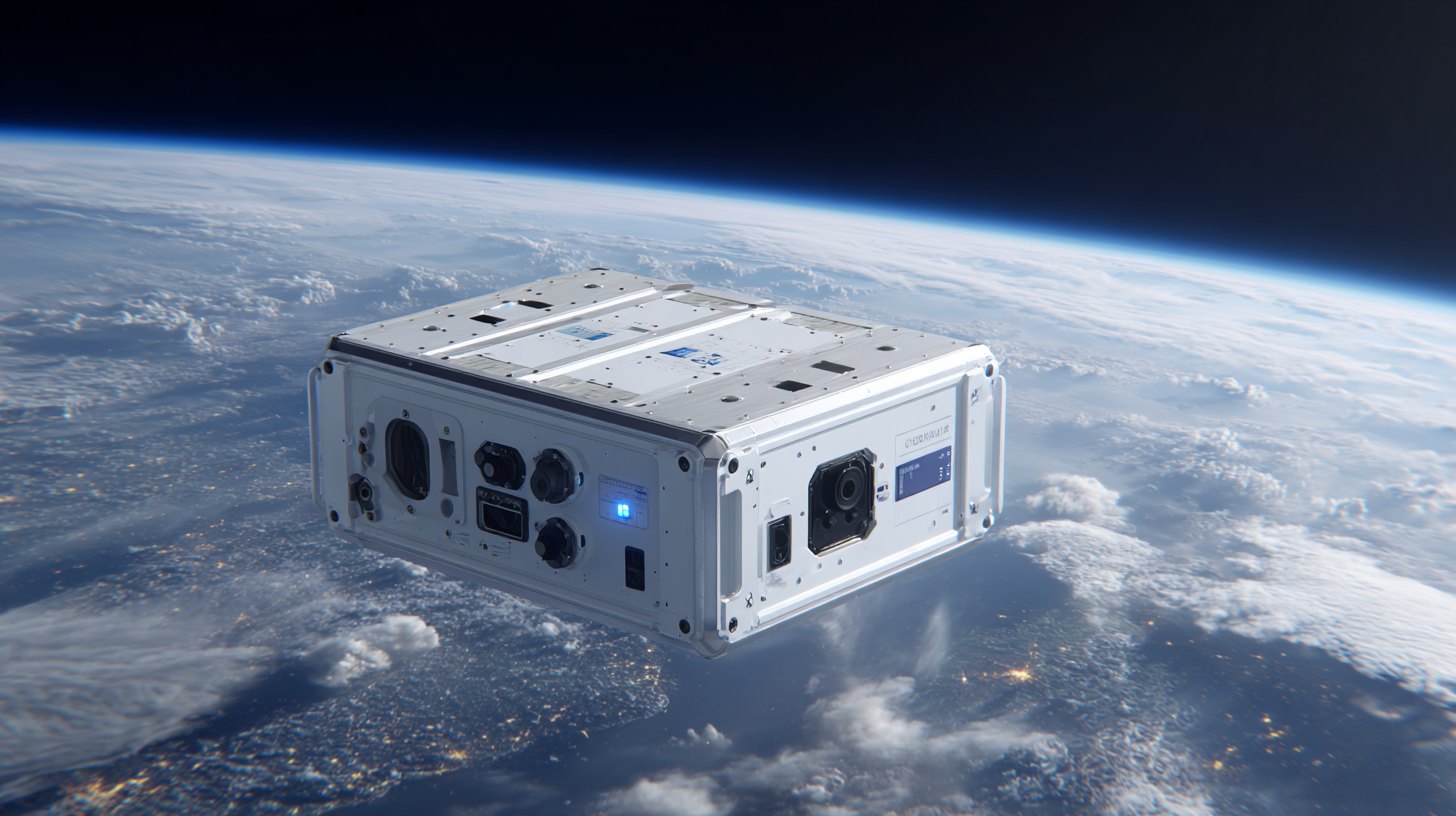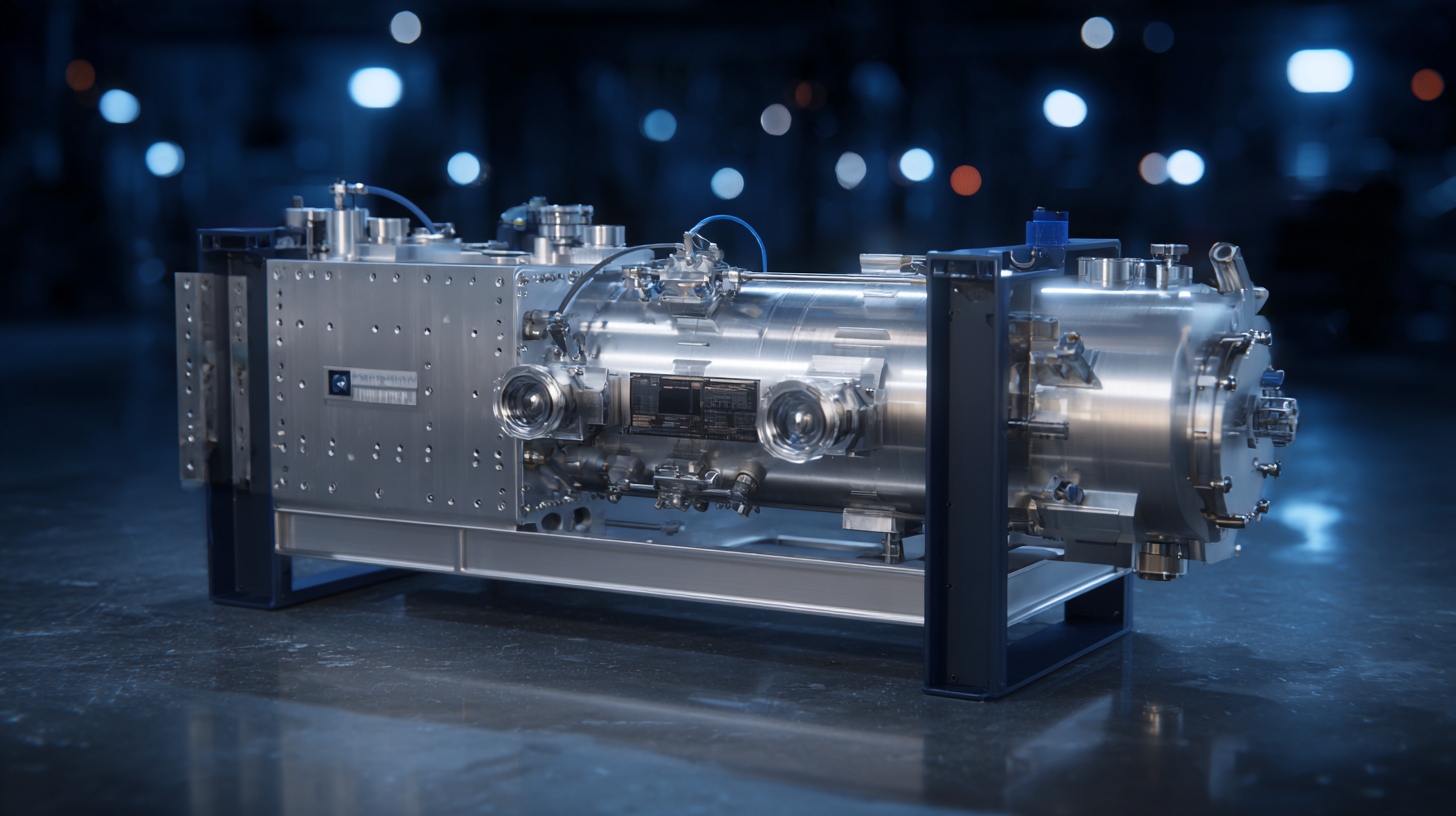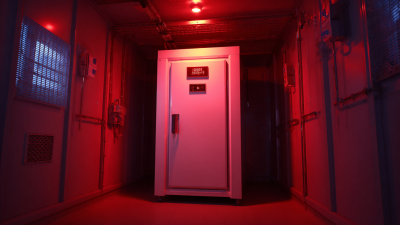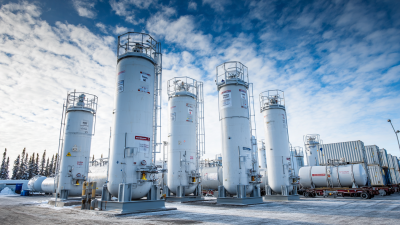
-
Home
-
About us
-
Products
-
Solutions
-
News
-
Blog
-
Contact us
Leave Your Message

As humanity ventures deeper into the cosmos, the demand for advanced cooling technologies in space applications escalates. One of the pivotal innovations in this arena is the Helium Super Cryogenic Refrigerator, which operates at ultra-low temperatures to facilitate various scientific experiments and instrumentations essential for space exploration. According to a report by MarketsandMarkets, the cryogenic refrigeration market is anticipated to reach USD 2.13 billion by 2025, driven primarily by the growing necessity for effective cooling solutions in aerospace and satellite systems.

This burgeoning field highlights the crucial role that Helium Super Cryogenic Refrigerators play in unlocking new frontiers of low-temperature research, allowing scientists to conduct experiments that were previously unattainable. The synergy of these technologies with space missions not only enhances experimental accuracy but also fortifies the foundation for breakthroughs in understanding fundamental physics and the universe itself.
Helium super cryogenic refrigerators are pivotal in advancing low temperature research, particularly in space applications. At extremely low temperatures, materials exhibit unique properties that are essential for various scientific explorations, such as high-energy physics and astrophysics. These refrigerators utilize the unique thermodynamic properties of helium, which remains in a superfluid state at cryogenic temperatures. This allows for efficient cooling mechanisms that can reach temperatures close to absolute zero, which is necessary for experiments that require precise thermal management.
The operational principles of these systems hinge on the Joule-Thomson effect and the second law of thermodynamics. In a helium super cryogenic refrigerator, helium gas is first compressed, raising its temperature. It is then allowed to expand, leading to a drop in temperature as it absorbs heat from its surroundings. This cycle can be repeated multiple times, enabling sustained low temperatures that facilitate various critical experiments in space. Such refrigeration systems not only enhance our understanding of cryogenics in microgravity environments but also support the development of highly sensitive instruments needed for exploring the cosmos.
| Parameter | Value | Unit | Description |
|---|---|---|---|
| Cooling Capacity | 100 | W | Maximum cooling capacity achievable |
| Operating Temperature Range | 1.0 to 10.0 | K | Temperature range for optimal performance |
| Power Consumption | 500 | W | Average power required during operation |
| Weight | 120 | kg | Total system weight for deployment |
| Cryogen Type | Helium | - | Type of cryogen used for cooling |
| System Efficiency | 75 | % | Efficiency of the refrigeration system |
| Heat Exchange Method | Counterflow | - | Method used for heat exchange in the system |
Low temperature research plays a crucial role in advancing space exploration and technology. As missions venture further into the cosmos, understanding materials and phenomena at cryogenic temperatures becomes essential. These low temperatures enable scientists to study superconductivity, quantum states, and other exotic behaviors that are impossible to observe under normal conditions. Helium super cryogenic refrigerators are at the forefront of this research, providing the necessary cooling techniques for sensitive instruments and experiments aboard spacecraft.
**Tip:** When considering low temperature experiments in space, ensure that your equipment can withstand the harsh conditions of space, such as extreme radiation and vacuum. Proper insulation and redundancy in cooling systems are vital for the success of cryogenic experiments.
Additionally, the insights gained from low temperature research not only enhance our ability to explore outer space but also lead to innovations on Earth. Technologies developed through this research can improve telecommunications, energy transmission, and even medical applications. By unlocking the potential of cryogenic phenomena, we pave the way for breakthroughs that can revolutionize both space exploration and our daily lives.
**Tip:** Collaborating with multidisciplinary teams can enhance the research process. Drawing knowledge from various fields can lead to novel applications and help tackle the complex challenges faced in space missions.
This bar chart illustrates the average temperatures of various celestial bodies relevant to space exploration. Understanding these temperatures is crucial for the development of technologies such as helium super cryogenic refrigerators, which enable low-temperature research critical for future space missions.
The design of efficient helium refrigeration systems is crucial for advancing low temperature research in space applications. Helium super cryogenic refrigerators utilize the unique properties of helium to achieve ultra-cold environments necessary for various scientific experiments and technologies. By leveraging the low boiling point of helium, these refrigeration systems can maintain temperatures well below the threshold required for observing quantum phenomena and conducting high-precision measurements.
To optimize the performance of helium refrigeration systems for space missions, engineers focus on minimizing energy consumption while maximizing cooling capabilities. This involves employing innovative designs such as regenerative cycles and advanced heat exchangers, which enhance the efficiency of heat transfer. Additionally, incorporating lightweight materials and compact systems is vital to ensure that these refrigerators can withstand the rigors of space travel while maintaining operational reliability. The continued development of these systems holds the potential to unlock new scientific discoveries and improve the functionality of instruments deployed in outer space.

The implementation of cryogenic solutions in space environments presents a unique set of challenges that require innovative approaches. One of the primary concerns is the efficiency of cooling systems in varying gravitational conditions. According to a report by the National Aeronautics and Space Administration (NASA), traditional refrigeration methods struggle to perform in the microgravity of space, often leading to increased energy consumption and system failures. Helium super cryogenic refrigerators, however, show promise in reliably delivering temperatures as low as 4.2 K. This temperature capability is crucial for the operation of sophisticated instruments used in space exploration, including those aboard the James Webb Space Telescope, which operates at cryogenic temperatures to enhance infrared observations.
Another challenge lies in the thermal insulation required for maintaining these ultra-low temperatures. The European Space Agency (ESA) has identified that thermal leaks can significantly impact the performance of cryogenic systems. Advanced multilayer insulation (MLI) technologies have emerged as a solution to mitigate thermal losses in vacuum environments, allowing helium refrigerators to function optimally. Additionally, the reliability of these cooling systems is paramount; a study published in the Journal of Cryogenics indicates that failures in cryogenic systems can lead to mission jeopardy, underscoring the necessity for robust design and rigorous testing protocols to ensure operational stability in the challenging conditions of space.
The exploration of low temperature technologies is pivotal for advancing space research, particularly with the increasing demand for more efficient refrigeration systems. Recent studies indicate that the global market for cryogenic cooling systems is expected to grow significantly, projected to reach $3 billion by 2025, driven by applications in space missions, scientific research, and emerging technologies. Helium super cryogenic refrigerators are leading this innovation, providing unparalleled cooling capabilities necessary for sensitive experiments in space environments.
The integration of these advanced refrigeration systems facilitates the development of superconducting materials and quantum technologies essential for scientific discoveries. For instance, NASA's recent projects highlight how low temperature systems can enhance the performance of telescopes and detectors, enabling them to operate with maximum efficiency. Reports suggest that by achieving temperatures close to absolute zero, researchers can significantly reduce thermal noise, thus improving signal integrity in astronomical observations. As these technologies evolve, we can expect to see remarkable advancements in detector sensitivity, ultimately unlocking new frontiers in our understanding of the universe.






